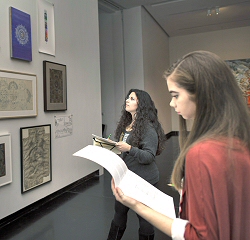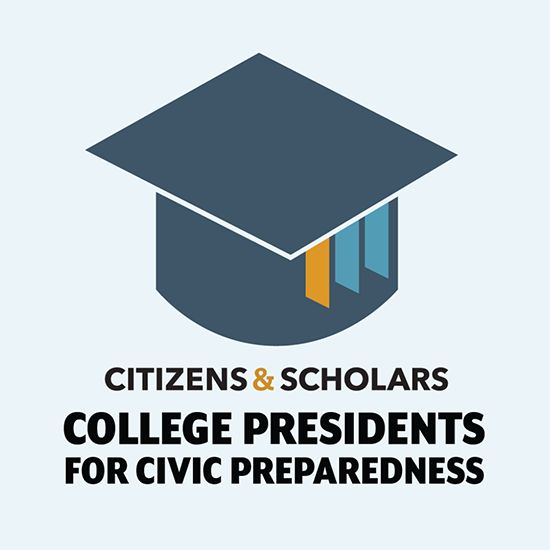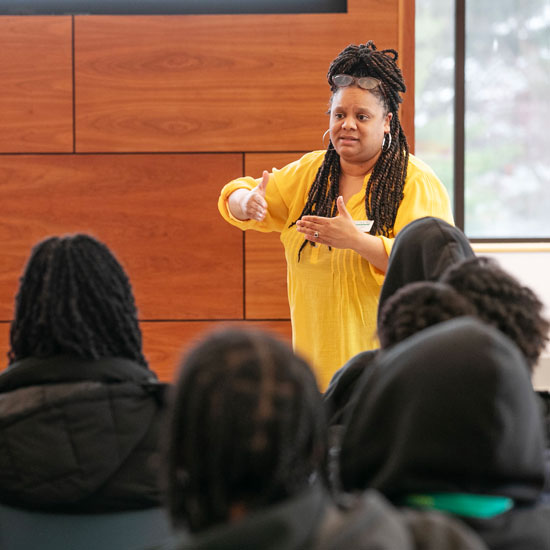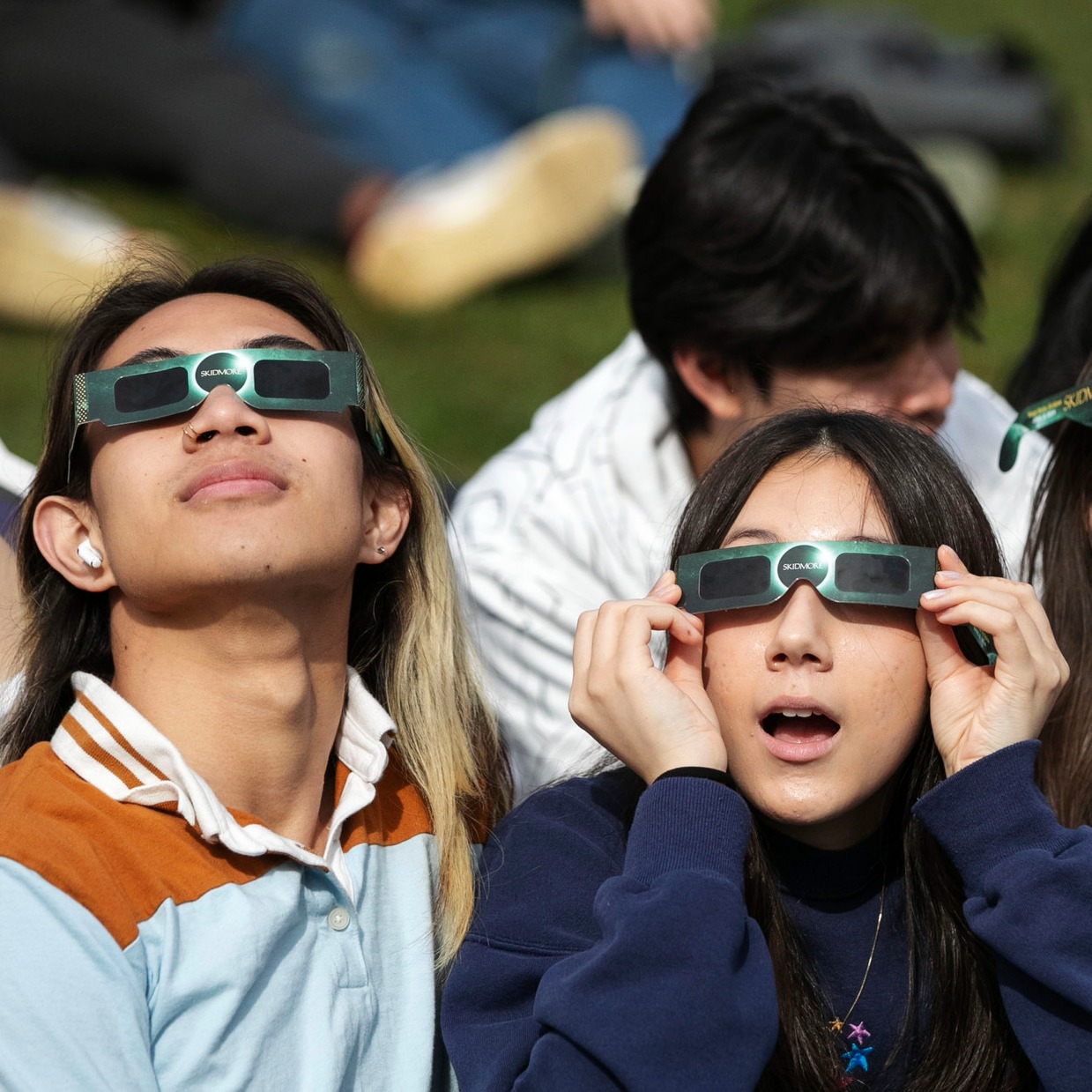Visual thinking
Teaching museums have sprung up across the country, becoming essential crossroads
of ideas on college campuses. The Frances Young Tang Teaching Museum and Art Gallery
at Skidmore is a national leader for its innovative curatorial practices and public
programs, which allow diverse audiences to experience a variety of perspectives. Seventeen
people work at the Tang full-time, and most of the Skidmore community, from students
and faculty to staff and administrators, get involved with its exhibits and events.
The Tang's distinctive architecture makes it a malleable venue for events and audiences.
Other spaces on campus are intended for a specific purpose, such as the Dance Theater
or Davis Auditorium, but the Tang physically embodies Skidmore's interdisciplinary
mission with its ability to bring people and ideas together in a shared, welcoming
space that fosters a plethora of intellectual and emotional experiences.
"The Tang is a laboratory of ideas, and in many ways Skidmore's town square, where
we encounter new ways of thinking—with art and objects, and with scholars and artists.
It helps Skidmore realize its liberal arts mission of creativity and critical thinking,"
says Ian Berry, the Tang's Dayton Director. "It is exciting every day as we build
provocative spaces where people from all academic disciplines and all walks of life
can gather to reflect on and debate urgent issues and big questions of what it means
to be human."

Rula Issa '17, left, and Sarah Coker '19 compare
Buddhist, Christian, Jewish, and Islamic patterns.
The recent Sixfold Symmetry: Pattern in Art and Science, co-curated by Assistant Director for Curatorial Affairs Rachel Seligman '91 and
mathematics professor Rachel Roe-Dale, was a great example of how the museum can be
the space for boundary-crossing inquiries using both art and objects. The co-curators
worked with eight faculty members to explore patterns in disciplines such as art history,
computer science, language, religion, psychology, and music. Pattern can be thought
of as something inherent to the world, existing already in biology and in nature waiting
to be discovered. Or, the exhibition suggests, patterns may be imposed upon things
by humans. In fact, the show asks, Is there a human need for pattern?
A significant aspect of the learning experience at the Tang is what museum educators
call visual thinking strategy. This is a popular tool used at museums to help audiences
to think more broadly, ask open questions, and make multifaceted analyses supported
by evidence. When a museum educator leads a group through a visual thinking strategy
session, every participant has the opportunity to share reactions to an artwork. There
is no single "correct" response; instead, the value of the session comes out of how
a work of art generates a wealth of ideas.
A very different exhibition, A More Perfect Union, curated by Director Ian Berry with artist and Vanderbilt professor Mel Ziegler,
took place during last year's presidential election. It was not a typical museum show.
Instead of paintings on the walls, Ziegler's collection of weathered American flags
hung from the ceiling, with a stage and podium at the center and with television screens
and sound system around an audience of chairs. Students, student groups, faculty,
and staff from multiple disciplines came together to engage in political discussions,
host community events, and together craft a welcoming space for election-related gatherings.
Skidmore's Political Science Department, the student-run Speakers Bureau, the Environmental
Studies Program, the Sustainability Office, and campus political clubs such as Democracy
Matters were just a few of the groups involved. Lectures took place in this space
on the topics of gender, immigration, "Teaching Trump," and climate change. Debate-
and election-viewing parties accommodated hundreds of students and Saratoga community
members.
Another feature of the Tang is its "Elevator Music" series of audio art installed
in the museum's large elevator. This past fall, accompanying A More Perfect Union, the elevator featured American campaign advertisements since 1952, compiled with
help from political science professor Chris Mann and two of his students, Henry Jaffe
'18 and Chloe Singer '18. It was common for Tang visitors to ride the elevator up
and down a few times, immersing themselves in the classic political ads.
Along with exhibitions, the Tang offers hands-on art workshops for small children
(often with Skidmore students assisting), artists' talks, and other events. The new
"Accelerator" series is using the museum's own collection to broaden conversations
about diversity and inclusion. Each year student interns and workers engage in all Tang operations, from mounting their own exhibitions to helping staff
with behind-the-scenes projects.
Tang admission is free; hours are Tuesdays, Wednesdays, Fridays, Saturdays, and Sundays
from noon to 5 p.m. and Thursdays from noon to 9 p.m. For more, visit tang.skidmore.edu or call 518-580-8080. —Blair Warren '17


